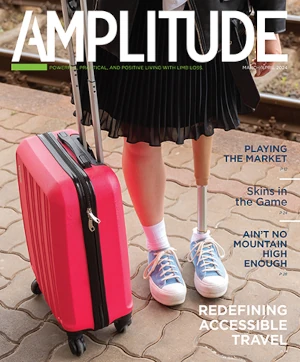A group of researchers from Clinical Research & Services/Biomechanics at Ottobock in Gottingen, Germany, and Vienna, Austria, set out to describe the sagittal kinetic and kinematic gait characteristics of the ankle and residual knee joint of the prosthetic limb and the knee loading parameters of the sound side of people with unilateral below-knee amputations. The researchers noted that previous literature revealed inconsistent findings on kinetic parameters for determining the risk of developing knee osteoarthritis, such as the peak knee adduction moment, knee flexion moment, and vertical ground reaction forces.
The team used gait analyses from 53 people with unilateral below-knee amputations and compared them to a control group, both taken from an Ottobock database. They evaluated the sagittal kinetic and kinematic gait characteristics of the ankle and residual knee joint of the prosthetic limb, and the peak knee adduction moment, knee flexion moment, and vertical ground reaction forces of the sound side. They also reported typical spatiotemporal gait parameters as gait velocity, step length, step length asymmetry, stance phase duration and asymmetry of stance phase duration.
The data analysis revealed that the people with below-knee amputations walked slower and more asymmetrically than the control group and that the kinematic pattern of the prosthetic ankle differed from that found in the control group. The largest difference was observed for the range of motion of the plantarflexion at push-off, which was significantly reduced for the prosthetic foot, according to the study. The residual knee joint was generally affected with respect to decreased moments and reduced knee flexion during stance phase. The peaks of the vertical ground reaction forces and knee adduction moments showed no differences between the amputees’ sound sides and the control group. The peak knee flexion moment at mid-stance was significantly reduced for the amputees’ sound side in comparison with the control group.
The research team concluded that the biomechanical data conformed with the literature. The parameters determining the risk of developing knee osteoarthritis were not increased on the sound side in comparison with people without amputations. “We deem it reasonable to assume that an appropriate prosthesis will reduce the likelihood of overloading the knee on the sound side during normal walking,” the study’s authors wrote.
The study was published online January 15 in the Canadian Prosthetics & Orthotics Journal.



